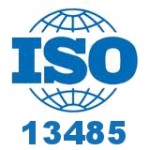The FDA has proposed to ban electrical stimulation devices (ESDs) intended for self-injurious or aggressive behavior due to unreasonable and substantial risk of illness or injury that cannot be corrected or eliminated through new or updated device labeling. This is the second time the FDA has proposed to ban the devices.
The FDA’s first ban of these devices in 2020 was challenged in Federal court and, in effect, annulled (vacated) based on the court’s interpretation of the FDA’s authorities under the Federal Food, Drug, and Cosmetic Act (FD&C Act). Since that decision, changes to the FD&C Act clarify that the FDA has authority to issue a ban such as the previous ban on ESDs for self-injurious or aggressive behavior, which applies to specific intended uses.
“Notably, some people who exhibit self-injurious or aggressive behavior have intellectual or developmental disabilities that make it difficult for them to communicate or make their own treatment decisions. These devices present a number of psychological risks including depression, anxiety, worsening of underlying symptoms, development of post-traumatic stress disorder, and physical risks such as pain, burns, and tissue damage,” said Owen Faris, Ph.D., acting director of the Office of Product Evaluation and Quality (OPEQ) in the FDA’s Center for Devices and Radiological Health (CDRH).
To support the proposed ban, the FDA analyzed new information, available since the FDA engaged in the prior rulemaking, relating to the risks and effects of ESDs and treatment for self-injurious and aggressive behavior, together with the information and data in the prior rulemaking.
The proposed rule, if finalized, will remove ESDs from the market, and the devices will no longer be considered legally marketed. “We estimate around 50 individuals currently have a treatment plan that includes the use, or potential use, of an ESD. Those exposed to these devices may need time to gradually transition away from this device and adjust treatment plans,” said Faris. “The FDA intends to consider the needs of these patients should we finalize the proposed ban.”
Evidence considered by the agency since the 2020 ban included clinical and scientific data, input from experts in the field and state agencies, comments received from the previous proposed rule to ban ESDs, input from patients and parents of individuals who have been treated with ESDs, and disability rights groups, as well as insights from FDA advisory panels. “Importantly, the new information supported and did not alter the FDA’s previous determinations regarding the risks and benefits associated with these devices when used for self-injurious or aggressive behavior, or the agency’s conclusion that these devices present unreasonable and substantial risk of illness or injury to the public,” said Faris.
This proposed rule applies only to ESDs intended to be used for self-injurious or aggressive behavior and does not apply to aversive conditioning devices intended to be used for other purposes, such as those used for smoking cessation, which are outside the scope of this rule, or other FDA-cleared or approved devices or technologies.
The Proposal to Ban Electrical Stimulation Devices for Self-Injurious or Aggressive Behavior will be open for comment until May 28, 2024. The FDA will then review and consider comments before determining whether to issue a final rule.






